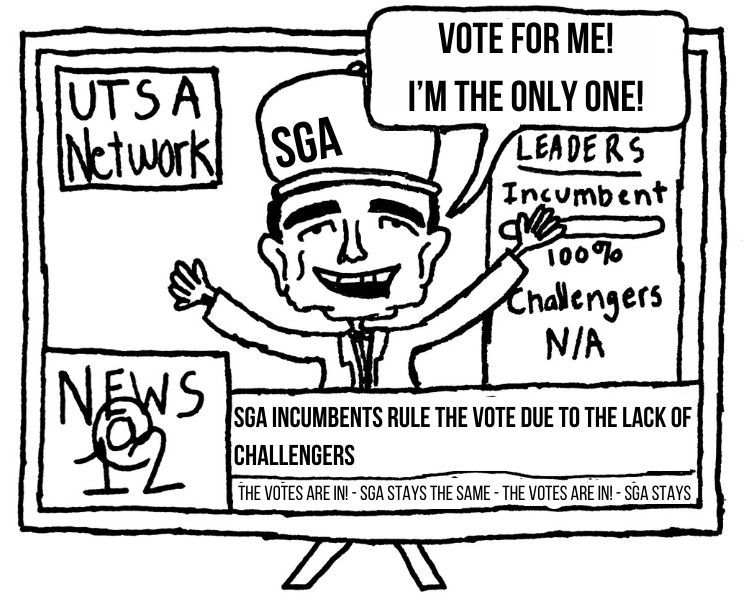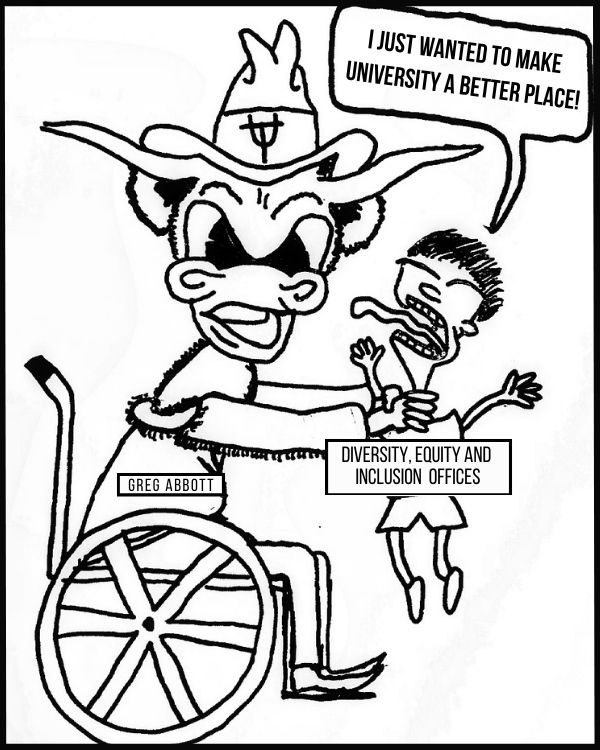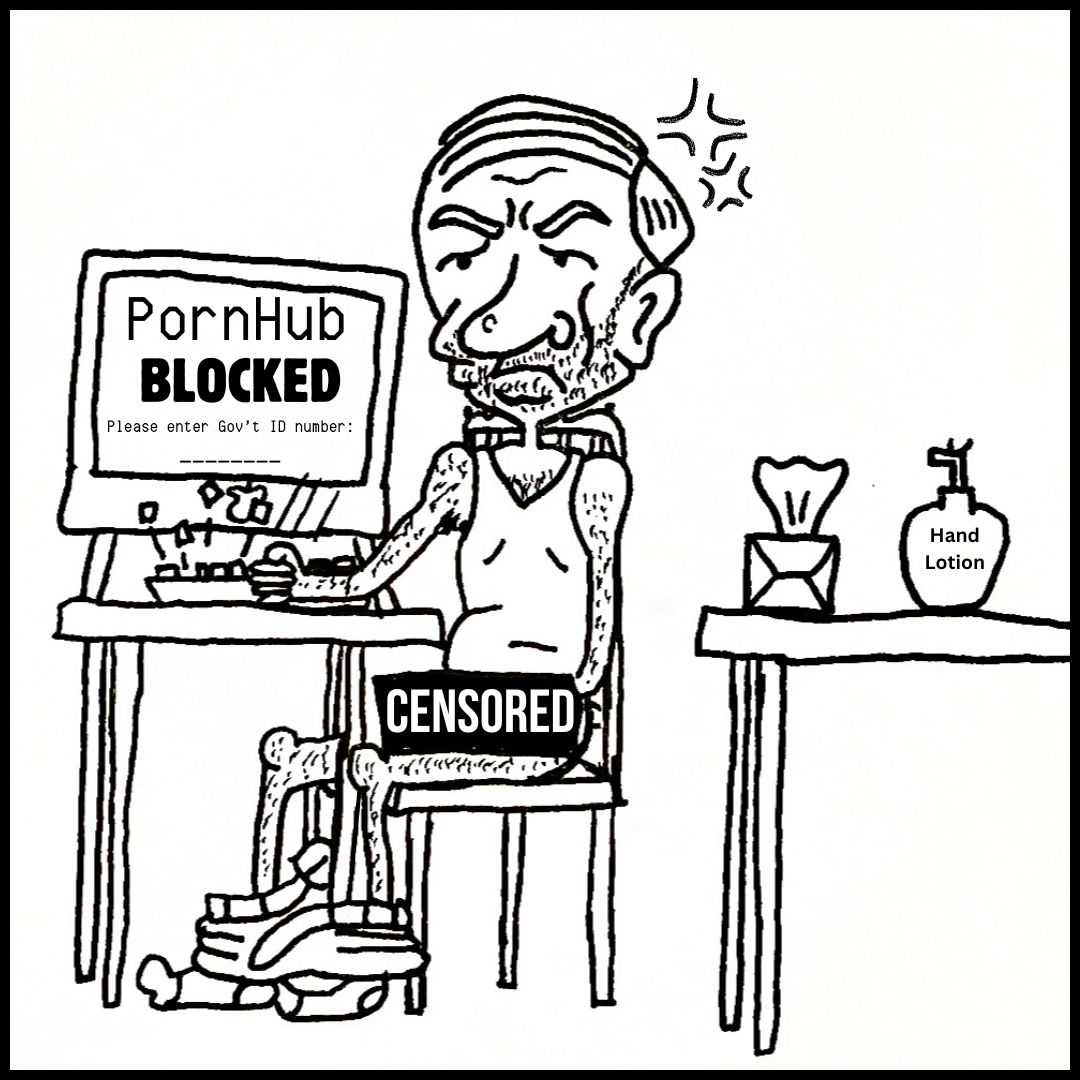UTSA is hell-bent on being tier one.
For the sake of one day being recognized among the best universities in the state (UT Austin, A&M and Rice, technically), UTSA has barreled towards the top, at all costs, and at times bulldozing elements that made it top-grade.
In 2009, the Texas legislature passed a bill creating incentives for seven emerging research universities — one of which being UTSA — to meet benchmarks of tier-one status, intending to increase the number of tier-one educational institutions in the state. Meeting certain criteria enables these emerging tier one universities to receive extra funds.
Although there are many measures of a tier-one university, the most accepted benchmark is annual research expenditures of $100 million or more.
At 46 years old, UTSA is in many respects an emerging university. It’s made precocious advances such as hiring first-class coaches, excelling in the field of cyber security, creating a marching band (and fight song) and raising admissions criteria.
Note, incoming freshmen cohorts of “high academic achievement” are a litmus test of a tier-one institution.
Nevertheless, despite the freshmen being as celebrated as they come, numbers to numbers, UTSA is far from tier-one status.
Our fledgling university trails behind the six other emerging tier-one institutions — Texas Tech, the University of Houston, the University of North Texas, UT-Dallas, UT-Arlington, UT-El Paso — in multiple areas, including the amount of endowment funds, number of Ph.Ds awarded, and, most importantly, in research expenditures. For measure, UTSA spent more on research in 2009 than it did in 2014.
Of course UTSA wants to be great. Being great is a good thing. However, rapid acceleration to be at the level of Texas’ tier-one institutions, through lofty ventures, has yielded patchy and pricey results. And while, in Texas, a football team makes sense; the $120 and rising athletic fee does not.
A Sparknotes version of a bildungsroman — story of maturation and growth — fumbles the point. In a quest to be a South Texas model of its burnt-orange great grandparent and its elderly neighbors, some of who happen to be tier one also, UTSA is missing steps, ignoring perspectives and overlooking essentialities.
What’s more, UTSA will likely not be tier one anytime soon.
Right now, UTSA is top-tier because its billboards, webpages, signage and people who stand at podiums say it is.
Unlike “tier one recognition,” which requires benchmarks for spending, or a class group project, there is no rubric, either subjective or objective, for “top tier.”
At a university level, top tier is not limited to the top levels of the university; being top tier is elevating and investing in all tiers — from nontraditional students to the top officers of the Student Government Association; English to biochemical engineering; part-time instructors to college deans.
The needs and reasonable requests of the university community should play a chief agenda-setting role. The voices of students and faculty should not only matter when their message corresponds to an acronymed plan.
The university expects students to rally behind its campaigns and initiatives, but when will the university take the initiative to stand behind its students?
We need more classrooms and more lab space just like we need more bathrooms and more parking.
It’s not simply more parking spaces and restrooms stalls; UTSA’s community needs more handicap-accessible parking and easily accessible, ideally private bathrooms — in addition to wider entry and exit ways for those with limited mobility. For visually impaired students, especially, the combination of winding lines and maze-like design of restroom facilities in the McKinney Humanities and Flawn Sciences Buildings is more of a nightmare than going to the bathroom should ever be.
A commitment to a top-tier educational experience is a commitment contingent on those in the top tiers of the university administration listening to, and collaborating with, students, faculty and staff who are not included in strategic planning sessions or in decision-making meetings.
In large numbers, students and faculty asked UTSA’s Campus Carry Task Force to include classrooms as gun-free zones in its list of preliminary recommendations for gun-free zones on campus. This list could then be approved or rejected by the Board of Regents. Classrooms weren’t included on the list.
Like their university, UTSA students want more, hopefully. An educational experience is more than UTSA-labeled apparel sold at a lingerie stores and silly events celebrating the squirrels on campus (Yes, this is a real event that the UC will host this month).
Granted, improved and new handicap accommodations, working clocks, higher salaries for associate professors and more elective options in COLFA departments more than likely will not stimulate the local economy or tantalize the nation’s brightest brains (and the funds that follow their research). So what?
Only a fraction of the campus community will use the new research space, obtain a Ph.D. or receive funds from an increased endowment — tier-one motivated improvements, which means only a small percentage of the campus community sees the spoils of the trek to tier one.
“Top tier” is a brilliant marketing label: undeniably positive and intentionally subjective with similar sounding words to suggest to the untrained eye that “tier one” and “top tier” have an interchangeable meaning. They don’t. Without a commitment at an institutional level to comprehensive excellence, both are empty promises.
UTSA has the chance to change the game. It can become a Texas landmark by tailoring its trajectory to its internal assets — the people weighed down by their books, backpacks and briefcases full of papers to grade, whose minds, hands and hearts have been making the university great for nearly half a century, even before the Texas legislature noticed.
Old universities (and the old men, and few women, who sit in the executive offices in them) get to qualify what a university should be by what they have already become.
Being top tier, in all its illusory might, is not tripping to be an old university but rather, emerging as a new academic force with tended roots and an individual identity.
Cultivating the character and the direction of UTSA means shifting the focus from what the university will one day become, and instead, invest in and be attentive to who’s there now and how those can shape who and what UTSA will be.











